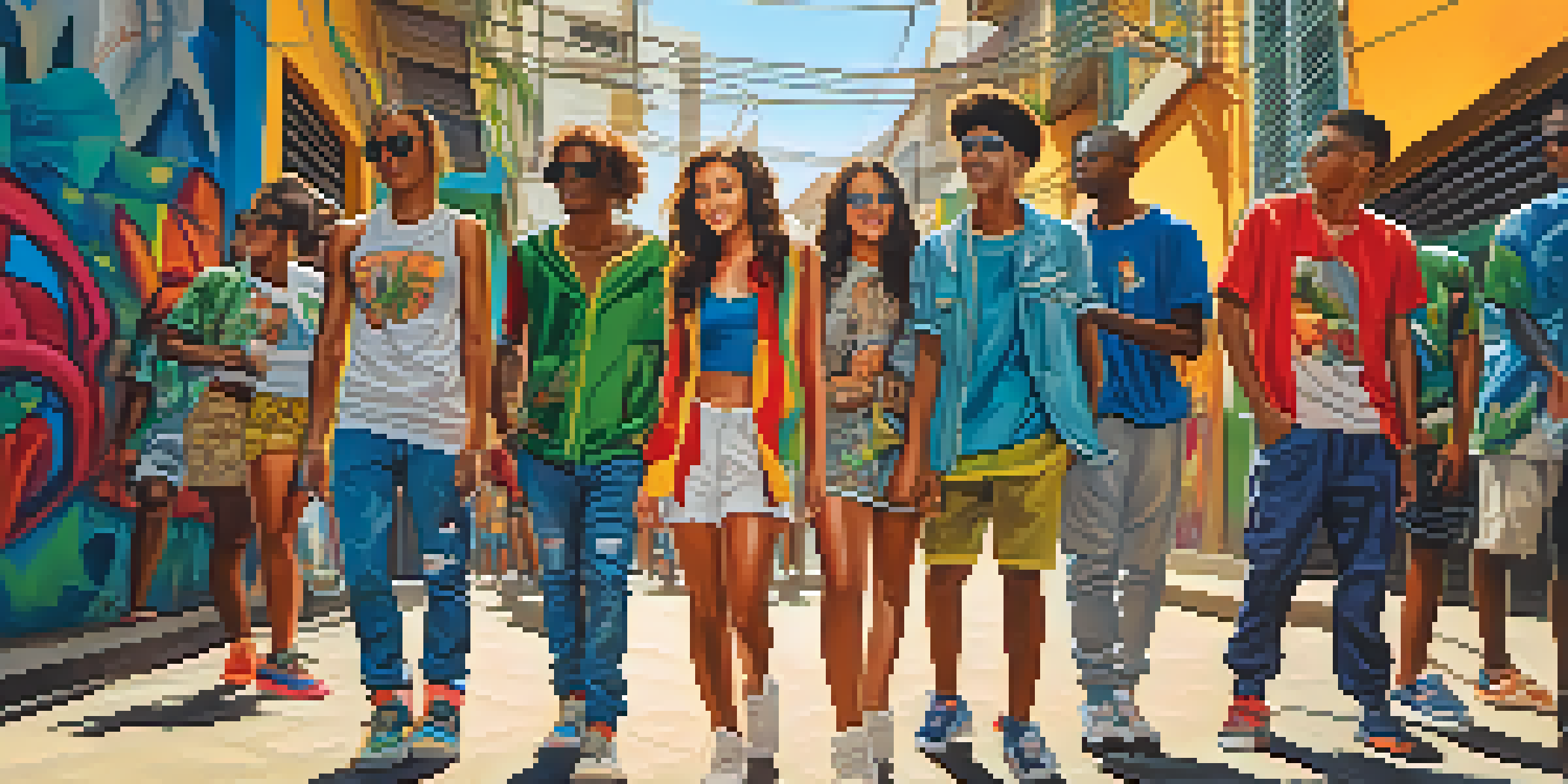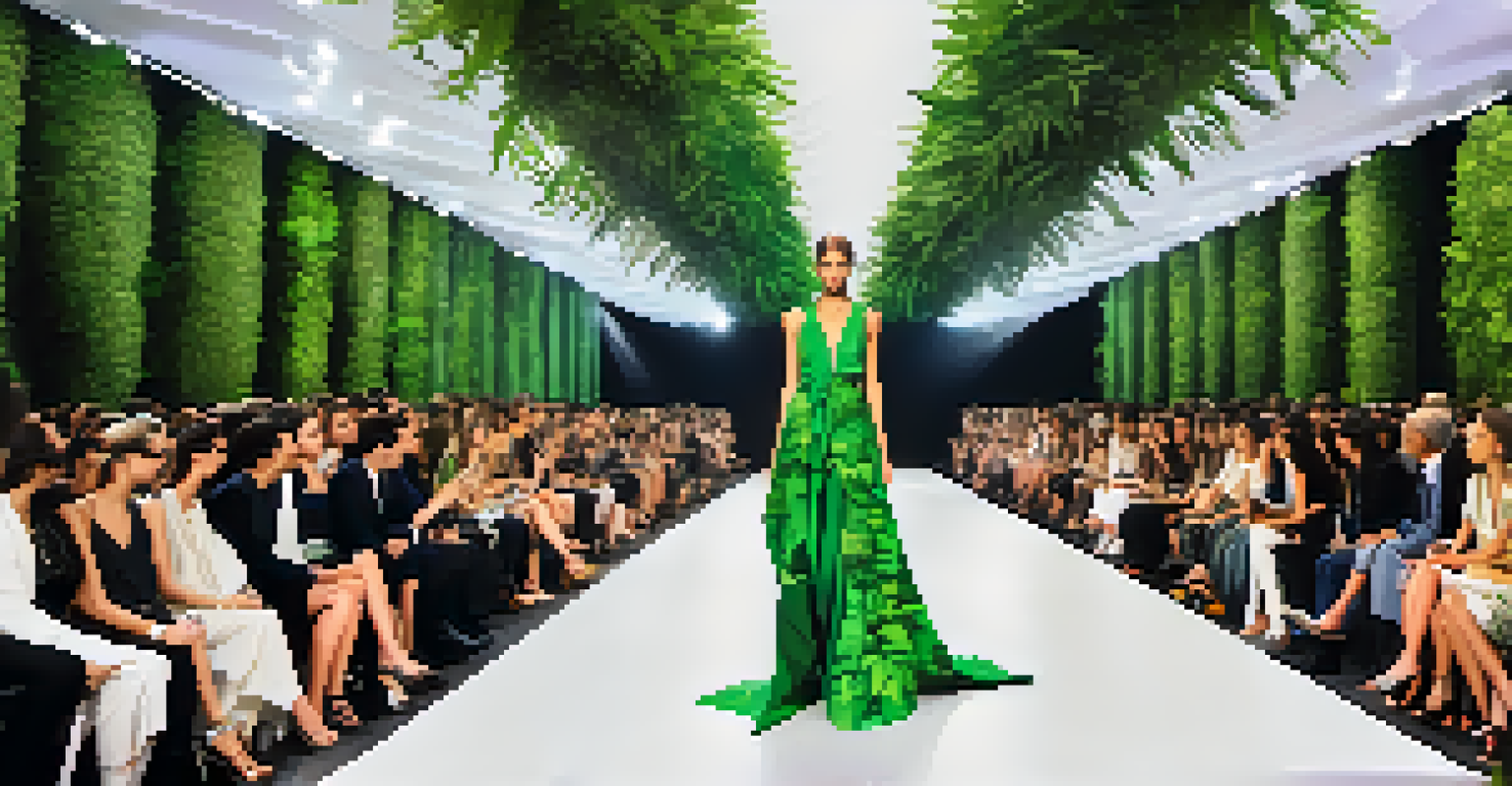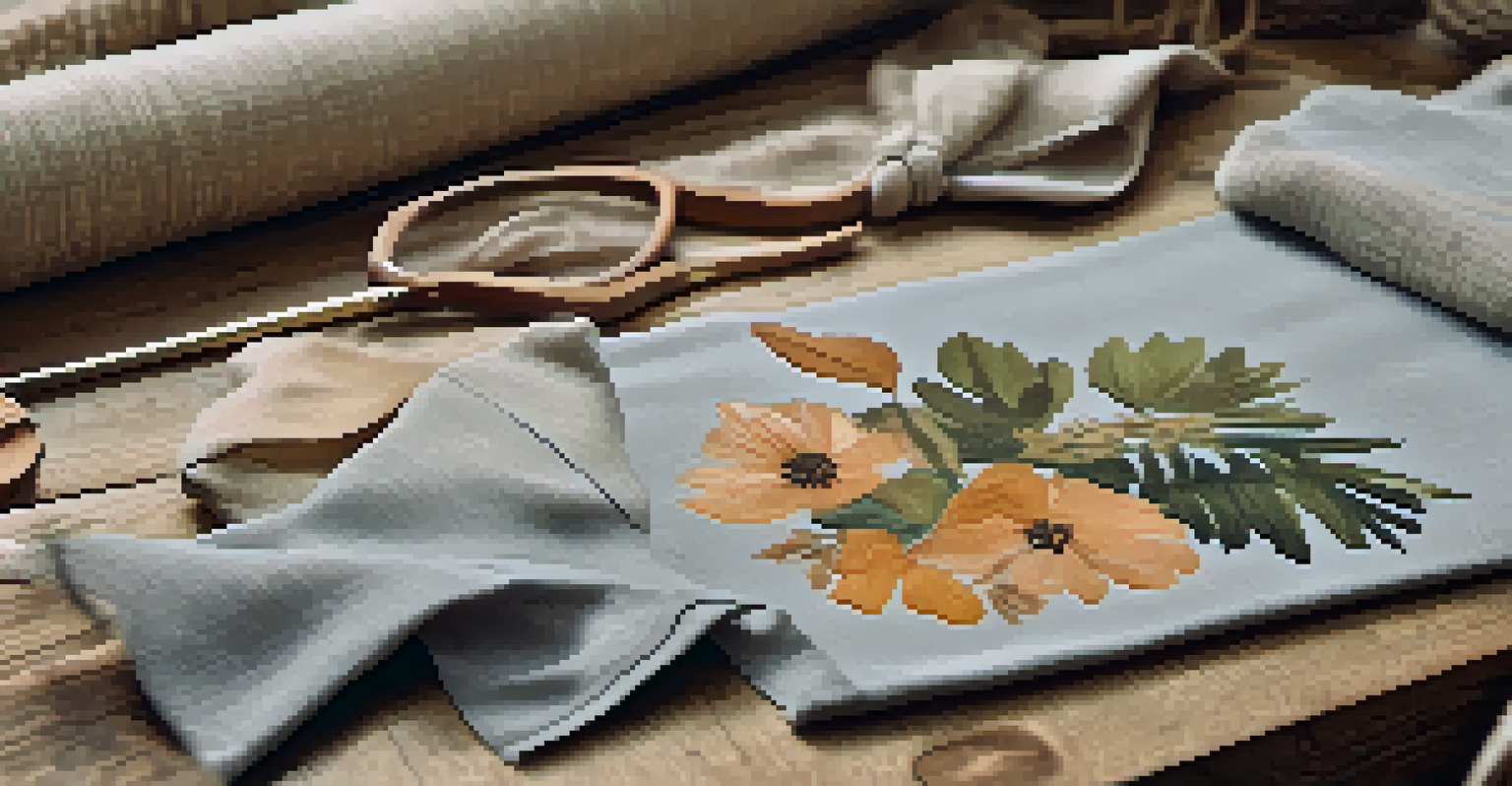Exploring Brazilian Fashion: Iconic Designers to Know

The Rich Tapestry of Brazilian Fashion History
Brazilian fashion is a vibrant blend of cultural influences, reflecting the country's diverse heritage. From indigenous roots to African and European styles, each layer adds depth to the fashion scene. This rich history has birthed a unique identity that stands out on the global stage.
Fashion is the armor to survive the reality of everyday life.
The fashion landscape in Brazil has evolved over the decades, influenced by socio-political changes and economic factors. Designers have often drawn inspiration from Brazil's natural beauty, vibrant festivals, and urban life. This interplay of tradition and modernity creates a dynamic environment for innovation.
Today, Brazilian fashion is not only recognized for its creativity but also for its commitment to sustainability and ethical practices. Many designers are now focusing on eco-friendly materials and fair labor, setting a positive example in the industry. This shift reflects a growing awareness of the environmental impact of fashion.
Dressing the Tropics: The Influence of Nature
Brazil's stunning landscapes, from lush rainforests to breathtaking beaches, serve as endless inspiration for designers. The vibrant colors and patterns found in nature are often mirrored in clothing lines, capturing the essence of the tropics. This connection to the environment gives Brazilian fashion a distinct flair.

Textiles play a crucial role in this expression, with many designers using local materials to create unique pieces. For example, the use of lightweight fabrics is essential for comfort in Brazil's warm climate. This focus on practicality combined with style showcases the ingenuity of Brazilian designers.
Brazil's Fashion Blends Cultures
Brazilian fashion is a vibrant mix of indigenous, African, and European influences that creates a unique identity on the global stage.
Moreover, nature-inspired motifs, like floral prints and animal patterns, are frequently featured in collections. These designs not only celebrate the country's biodiversity but also resonate with consumers looking for authenticity. It's a harmonious blend of art and nature that continues to captivate.
The Rise of Brazilian Streetwear
In recent years, Brazilian streetwear has taken center stage, combining urban influences with local culture. This trend reflects the youth's desire for self-expression and individuality through fashion. Streetwear has become a powerful vehicle for social commentary and cultural identity.
Sustainability is no longer about doing less harm. It's about doing more good.
Designers are increasingly tapping into the vibrant energy of Brazilian cities, using graffiti art and music as inspiration. Brands like PUMA and Osklen are leading the charge, merging sporty aesthetics with high-fashion elements. This fusion creates unique looks that appeal to a diverse audience.
The rise of social media has further amplified this movement, enabling designers to reach a global audience. Platforms like Instagram allow for instant sharing of street style, making Brazilian fashion more accessible than ever. This visibility is helping to solidify Brazil's place in the global fashion arena.
Cultural Icons: The Designers Shaping Brazilian Fashion
Several designers have emerged as cultural icons, each bringing their unique vision to the forefront of Brazilian fashion. For instance, Alexandre Herchcovitch is known for his avant-garde designs that challenge traditional notions of beauty. His innovative approach has garnered international acclaim and inspired many.
Another prominent figure is Gloria Coelho, celebrated for her architectural and sculptural designs. Her work often combines femininity with a strong sense of structure, making her pieces both elegant and bold. Coelho’s influence extends beyond fashion; she’s also a vocal advocate for sustainability.
Sustainability Drives Innovation
Many Brazilian designers are prioritizing eco-friendly practices and materials, reflecting a growing commitment to sustainability in the fashion industry.
Marcelo Quadros is another designer redefining the fashion landscape with his focus on contemporary and casual styles. His brand, M.Quadros, emphasizes versatility and comfort while maintaining a chic aesthetic. These designers, among many others, are pivotal in shaping Brazil's fashion narrative.
Sustainability in Brazilian Fashion
Sustainability is becoming a significant focus in Brazilian fashion, with many designers prioritizing eco-friendly practices. This shift is a response to global environmental challenges and a reflection of Brazilian values. Innovative use of materials, such as organic cotton and recycled fabrics, is gaining popularity.
Events like São Paulo Fashion Week now feature sustainability-focused collections, highlighting the importance of ethical fashion. Designers are showcasing their commitment to reducing waste and promoting fair labor practices. This movement is not just a trend; it's a necessary evolution in the industry.
Moreover, Brazilian brands are increasingly collaborating with local artisans, preserving traditional crafts while promoting sustainable livelihoods. By blending modern design with heritage skills, they create unique products that honor Brazil's cultural diversity. It’s a beautiful example of how fashion can be both stylish and responsible.
The Role of Fashion Weeks in Brazil
Fashion weeks in Brazil, particularly São Paulo and Rio de Janeiro, serve as vital platforms for both established and emerging designers. These events showcase the latest trends and innovations, drawing attention from international buyers and media. They play a crucial role in positioning Brazil as a key player in the global fashion arena.
During these weeks, designers have the opportunity to present their collections in elaborate runway shows, highlighting their creative vision. The atmosphere is charged with excitement, as fashion enthusiasts gather to witness the latest styles. It's an event that celebrates not just fashion but also the cultural richness of Brazil.
Streetwear Showcases Cultural Identity
The rise of Brazilian streetwear highlights urban influences and self-expression, making it a powerful platform for social commentary and cultural representation.
In addition to runway shows, these fashion weeks often include workshops and panels, fostering dialogue around important industry topics. This blend of creativity and education ensures that Brazilian fashion continues to evolve and adapt to changing trends. It’s a vibrant showcase that reinforces Brazil's influence on the global stage.
Future Trends in Brazilian Fashion
As Brazilian fashion continues to evolve, several trends are emerging that reflect both local and global influences. One significant trend is the increasing fusion of technology with fashion, leading to innovative designs that cater to the digital age. Wearable tech and smart fabrics are beginning to make their mark.
Another trend is the growing emphasis on inclusivity and diversity within the industry. Designers are recognizing the importance of representing various body types, cultures, and backgrounds in their collections. This shift towards inclusivity is helping to redefine beauty standards and promote acceptance.

Lastly, the focus on sustainability is likely to intensify, with more brands committing to ethical practices and eco-friendly materials. As consumers become more conscious of their choices, Brazilian fashion will need to adapt to these preferences. This forward-thinking approach will shape the future of fashion in Brazil for years to come.